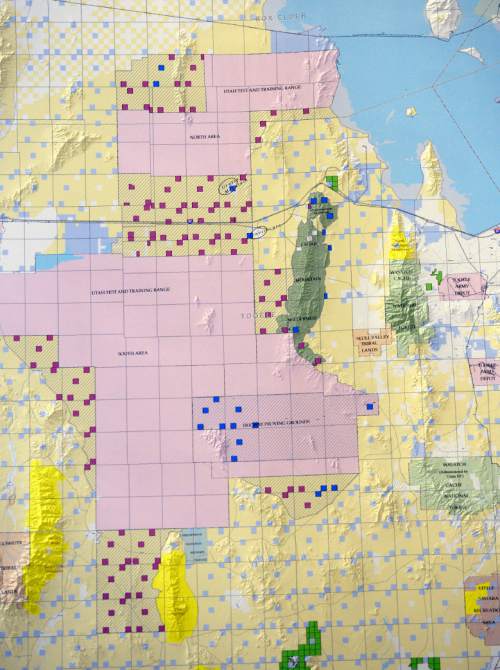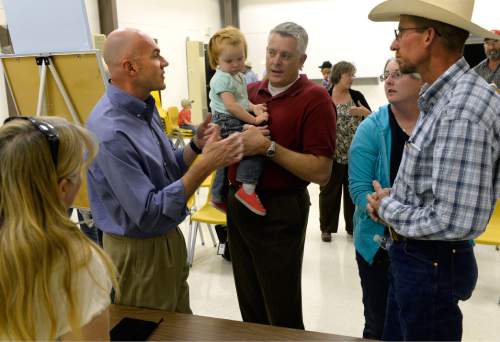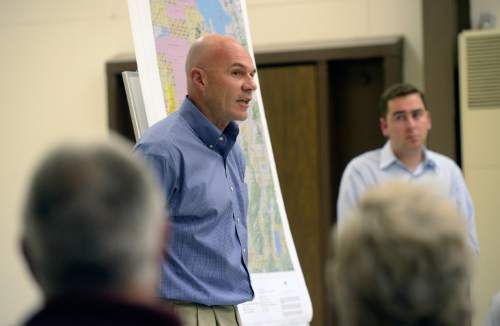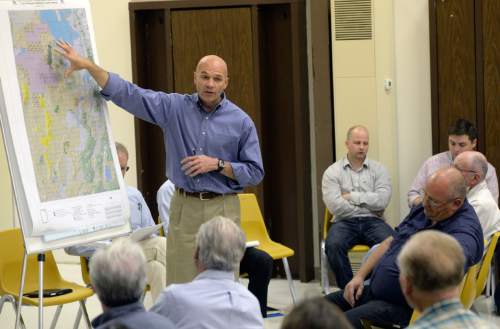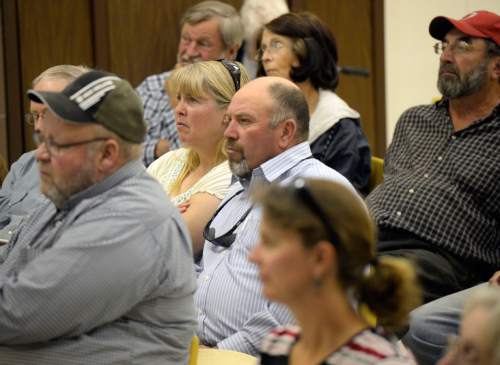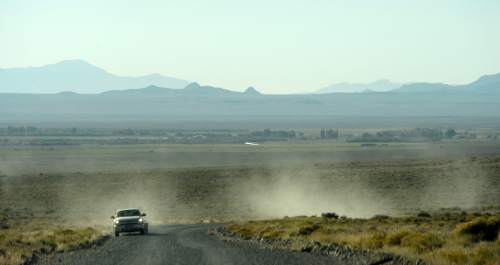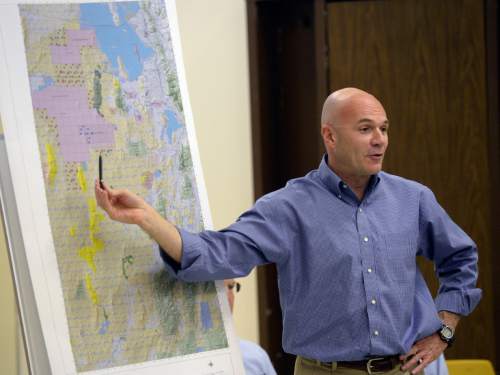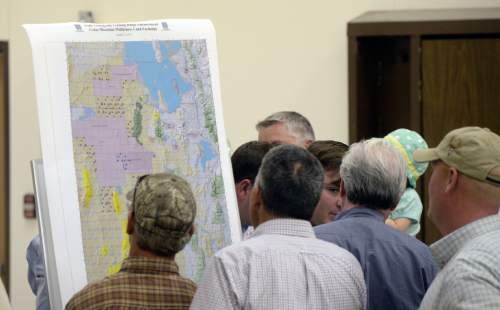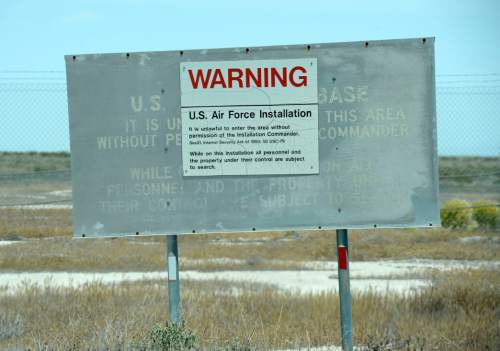This is an archived article that was published on sltrib.com in 2014, and information in the article may be outdated. It is provided only for personal research purposes and may not be reprinted.
Partoun • The U.S. Air Force on Monday told residents of west Juab County it needs to expand its training range to accommodate the new F-35 and asked for community cooperation.
Chris Robinson, the director of operations for the Utah Test and Training Range, said adding 700,000 acres around the perimeter of the Utah Test and Training Range will create more ground and air space for F-35 pilots to test the aircrafts' missiles.
No missiles or bombs will be dropped on the expanded areas, Robinson told about 50 people here at a public meeting at West Desert High School.
However, Robinson said F-35 pilots would be able to fire weapons above the expansion toward targets on the interior of the Test and Training Range.
Robinson called the expanded area "encroachment buffer zones."
Standing at a map, Robinson put his pen on a section of the proposed expansion and explained, "If someone puts a wind farm there, I'm done testing."
Something like a wind farm, Robinson said, would obstruct the air space around the Test and Training Range and create electronic interference.
The F-35 is the new fighter jet coming to the Air Force, Navy and Marine Corps. Hill Air Force base conducts maintenance on the F-35 and a fighter squadron there will receive 72 F-35s next year.
Ed Cox, a staffer for Sen. Orrin Hatch, told the audience Hatch wants Congress to vote this year on expanding the Test and Training Range so the F-35 squadron isn't hampered. The expansion and related land transfers could be done administratively, Cox said, but that process would be slower and might not guarantee the protections for land users that an act of Congress would.
Under the proposal discussed Monday, the Air Force would take control of the 700,000 acres in Juab, Tooele and Box Elder counties and prohibit development. But existing land users, including ranchers and hunters, would still have access.
The Air Force would set up a system for monitoring who is entering the buffer zone. Robinson said one possibility is creating a website where people can register before entering.
The Air Force could notify registrants of a scheduled test. If a test is underway, a guard could block the road for a few minutes, Robinson said, until the test is complete.
Residents are already accustomed to military jets flying overhead, and no one said they opposed the expansion, but residents asked some pointed questions of Robinson.
Rancher Alan Johnson wanted assurances that existing grazing permits and the rights that go with it would be honored.
"I'm not afraid of you bombing, but if you take that grazing permit, that's a third of my acreage and I'm out of business," Johnson said.
Robinson as well as a representative of Hatch's office assured Johnson the grazing rights would be honored.
Much of the acreage in the expansion belongs to the Utah School and Institutional Trust Lands Administration (SITLA).
Kim Christy from SITLA said the proposal calls for the federal government to trade Utah land currently owned by the U.S. Bureau of Land Management. Christy said some of the property being discussed has mining and quarry potential in Juab, Millard and Beaver counties. SITLA's mission is to sell and manage its lands to generate money for public schools.
The expansion includes portions of the Pony Express Trail Road — the area's main artery to Salt Lake City.
Kathy Hill, of Partoun, told Robinson she would like the road off-limits to closures.
"You say it's not going to be very much of a problem, but [closures are] going to be a major hardship for us," Hill said.
Cox said the plan calls for creating an advisory board consisting of commissioners from the counties surrounding the Test and Training Range and land users to communicate concerns to the Air Force.
Juab County Commissioner Rick Carlton asked if the advisory board would have "teeth" in the event something like a livestock roundup conflicts with a planned weapons testing.
Robinson said the Air Force would try to accommodate both by learning what time the roundup would happen and if the test could be scheduled around it.
"In other words, what you're telling me is no," Carlton said.
"It depends on the situation," Robinson replied.
The current training range is 2.3 million acres — one-third larger than Delaware — and includes the U.S. Army's Dugway Proving Ground. The Air Force manages all the air space.
As of 2012, aircraft were flying 16,300 sorties a year, according to the Air Force.
Joseph Matthews, a rancher and farmer who said his home is adjacent to the expansion, told Robinson the land swaps could limit the opportunity for expanding grazing in western Juab County. He also worried about having roads closed when someone in his family has a medical emergency.
"We want to support our troops but, my golly, it feels like we're not getting the whole picture," Matthews said.
Twitter: @natecarlisle




